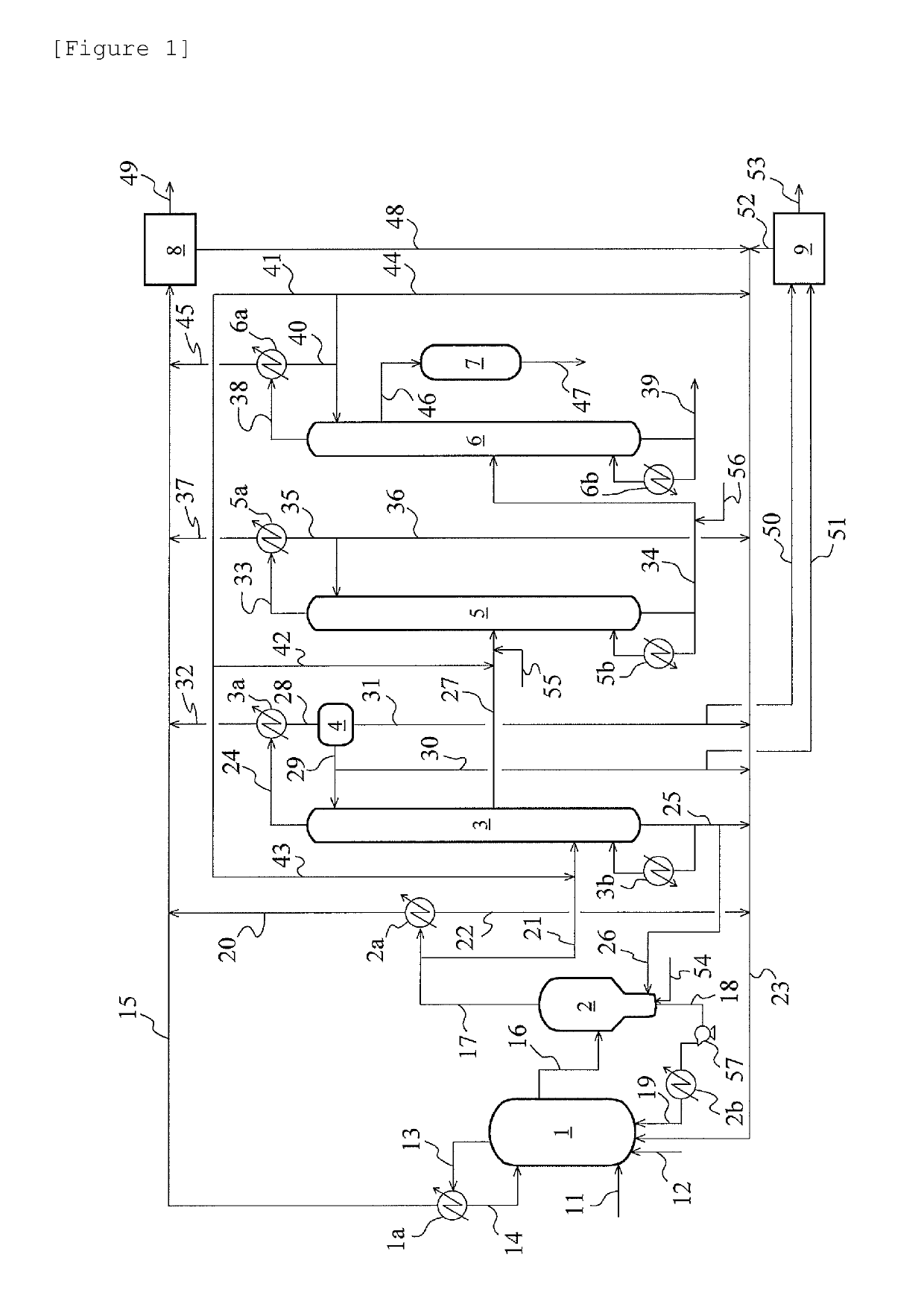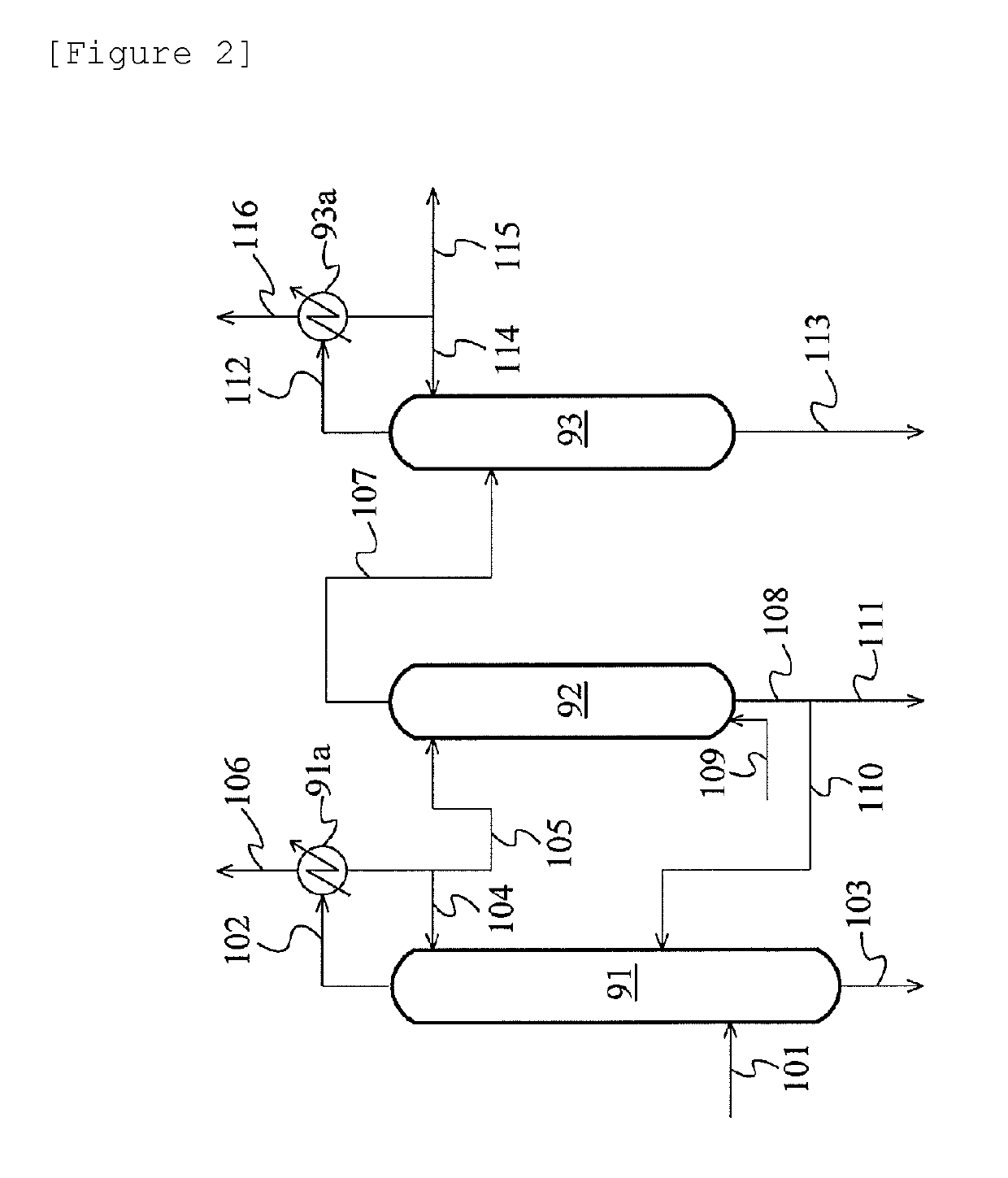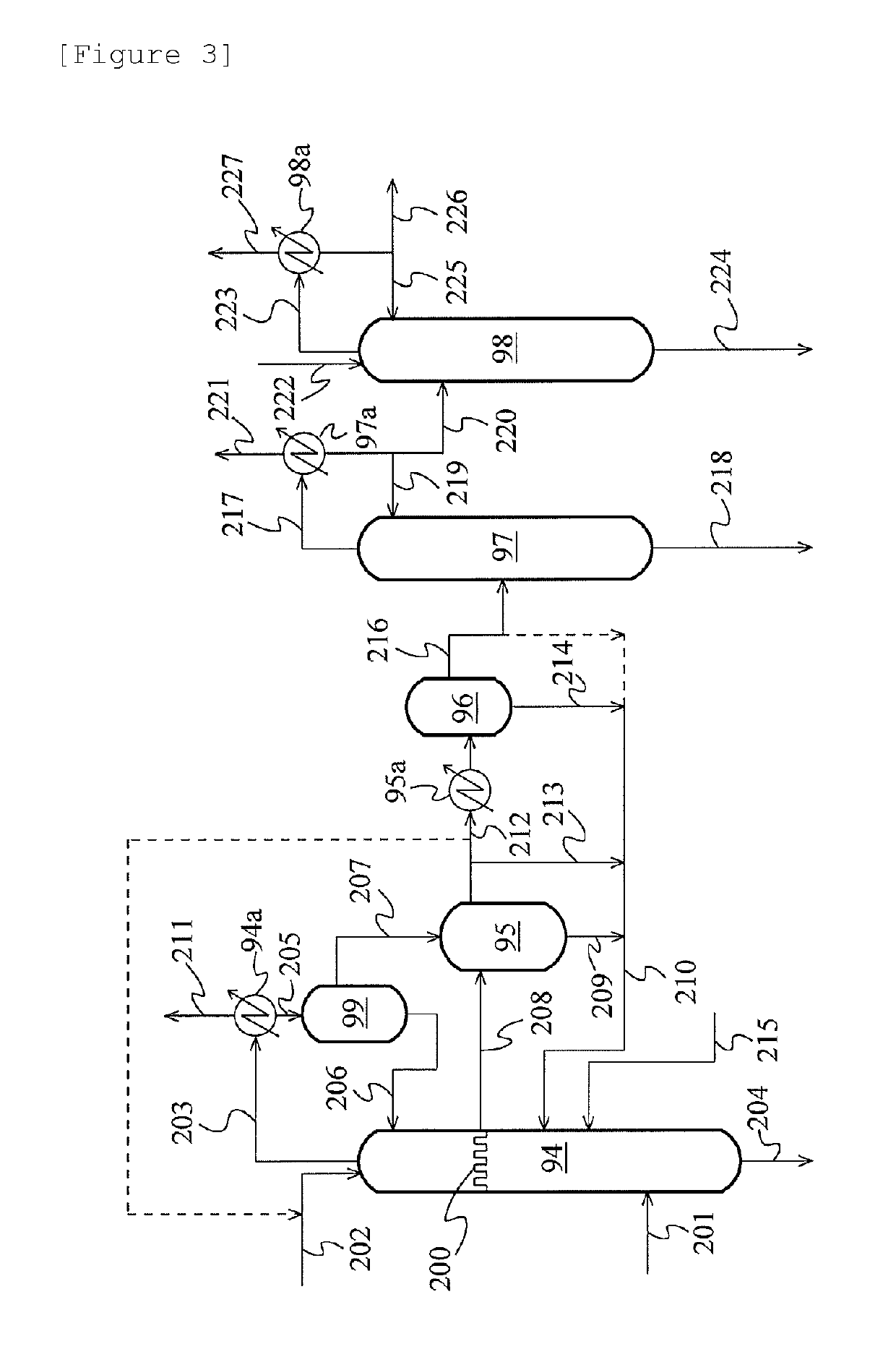Method for producing acetic acid
a technology of acetic acid and ion exchange resin, which is applied in the field of producing acetic acid, can solve the problems of reducing the life of organic iodine compound removal ion exchange resin, deteriorating quality of product acetic acid, and corroding metals, so as to reduce the concentration of metal ions in the product acetic acid, improve the life of silver-substituted ion exchange resin used in the adsorption removal
- Summary
- Abstract
- Description
- Claims
- Application Information
AI Technical Summary
Benefits of technology
Problems solved by technology
Method used
Image
Examples
example 1
[0100]The same experiment as in Comparative Example 1 was conducted except that: the material of the dehydration column was changed to a nickel base alloy [Hastelloy B2 (HB2): 28% of Mo, 69% of Ni, not more than 1% of Cr, not more than 2% of Fe, not more than 1% of Co, and not more than 1% of Mn]; and the operating conditions of the dehydration column were set to a column top temperature of 160° C. and a column bottom temperature of 170° C.
[0101]The composition of the bottom fraction of the dehydration column was 490 ppm of water, 13,200 ppb of iron ions, 5,800 ppb of chromium ions, 5,200 ppb of nickel ions, 3,100 ppb of molybdenum ions, 590 ppb of zinc ions, 52 ppb of hexyl iodide, and acetic acid as a balance (including a very small amount of impurities). Further, after the silver-substituted ion exchange resin treatment, the silver ion concentration of the product acetic acid was 18 ppb, the iron ion concentration was 25 ppb, the chromium ion concentration was 9 ppb, the nickel i...
example 2
[0102]The same experiment as in Example 1 was conducted except that a mixture liquid of 2% of methyl iodide, 2% of methyl acetate, 1% of water, 500 ppb of iron ions, 280 ppb of chromium ions, 190 ppb of nickel ions, 110 ppb of molybdenum ions, 410 ppb of zinc ions, 51 ppb of hexyl iodide, and acetic acid as a balance (including a very small amount of impurities) obtained by passing the first liquid stream portion withdrawn from a side stream of the first distillation column (lower boiling point component removal column) through a pipe made of a nickel base alloy [Hastelloy B2 (HB2)] material was used as the charging mixture fed to the dehydration column.
[0103]The composition of the bottom fraction of the dehydration column was 490 ppm of water, 770 ppb of iron ions, 420 ppb of chromium ions, 1,900 ppb of nickel ions, 800 ppb of molybdenum ions, 590 ppb of zinc ions, 50 ppb of hexyl iodide, and acetic acid as a balance (including a very small amount of impurities). Further, after the...
example 3
[0104]The same experiment as in Example 1 was conducted except that the material of the dehydration column was changed to a nickel base alloy [Hastelloy C (HC276): 16% of Mo, around 57% of Ni, 16% of Cr, 5% of Fe, not more than 2.5% of Co, and not more than 1% of Mn].
[0105]The composition of the bottom fraction of the dehydration column was 520 ppm of water, 13,300 ppb of iron ions, 6,400 ppb of chromium ions, 5,800 ppb of nickel ions, 3,100 ppb of molybdenum ions, 590 ppb of zinc ions, 48 ppb of hexyl iodide, and acetic acid as a balance (including a very small amount of impurities). Further, after the silver-substituted ion exchange resin treatment, the silver ion concentration of the product acetic acid was 16 ppb, the iron ion concentration was 28 ppb, the chromium ion concentration was 12 ppb, the nickel ion concentration was 13 ppb, the molybdenum ion concentration was 7 ppb, the zinc ion concentration was 4 ppb, and the hexyl iodide concentration was less than 5 ppb (not more...
PUM
 Login to View More
Login to View More Abstract
Description
Claims
Application Information
 Login to View More
Login to View More - R&D
- Intellectual Property
- Life Sciences
- Materials
- Tech Scout
- Unparalleled Data Quality
- Higher Quality Content
- 60% Fewer Hallucinations
Browse by: Latest US Patents, China's latest patents, Technical Efficacy Thesaurus, Application Domain, Technology Topic, Popular Technical Reports.
© 2025 PatSnap. All rights reserved.Legal|Privacy policy|Modern Slavery Act Transparency Statement|Sitemap|About US| Contact US: help@patsnap.com



